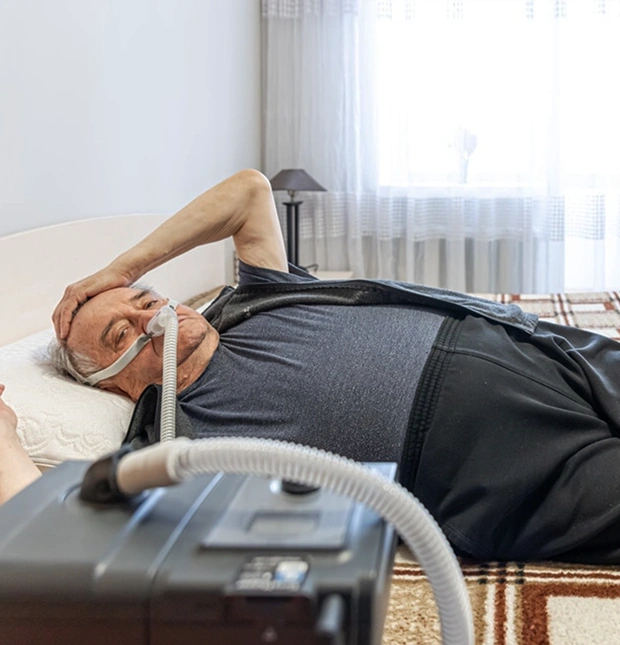
Effective Sleep Apnea Treatments
Do you ever wake up in the middle of the night gasping for air? Or have you had 8 hours of sleep and still woken up feeling exhausted? Are you constantly told that you snore in the middle of the night? If this sounds familiar, you may be one of the millions of Americans that suffer from sleep apnea.
Sleep apnea is more than just a condition that causes snoring and disrupts those sleeping near you, it is a condition where your body is chronically deprived of oxygen throughout the night due to an obstructed airway. If left untreated, sleep apnea puts you at risk for diseases including dementia, cognitive impairment, and heart disease. Depending on the severity of your sleep apnea, oxygen deprivation over night may even become life-threatening. The good news is that sleep apnea is a highly treatable condition and Dr. Nalbandian is committed to addressing this issue for her patients in Burbank and the surrounding communities in Glendale and the San Fernando Valley.
Understanding Sleep Apnea
Sleep apnea is a disorder in which your breathing stops or becomes very shallow while you sleep due to an obstruction in the airway. As a result, the body and brain slowly become oxygen deprived.
As people breathe more shallowly and pause breathing, oxygen levels may fall dangerously low causing people to wake up at night gasping for air. The constant deprivation of oxygen and disruptions in sleep leaves people suffering from this condition feeling constantly exhausted, foggy, and can have long term severe impacts on brain function and overall health.
Types of Sleep Apnea
1. OSA (Obstructive Sleep Apnea)
CPAP (Continuous Positive Airway Pressure):
- A CPAP is a mask that keeps your airway open and maintains your airflow while sleeping.
- Sleep studies determine what CPAP pressure settings are appropriate for each person to reduce obstructive events.
- CPAP therapy is considered the gold standard for patients with severe sleep apnea.
MAD (Mandibular Advancement Device):
- MAD’s are oral appliances made by a specially trained dentist that bring the jaw forward while worn that gently postures the jaw forward to open the airway.
- MAD appliances are ideal for patients with mild-moderate OSA as they are not as bulky or costly as a CPAP machine.
2. OSA (Obstructive Sleep Apnea)
Recognizing the Symptoms of Sleep Apnea
- Snoring
- Chronic Fatigue
- Difficulty staying awake
- Abruptly awakening throughout the night
- Weight gain
- Morning Headache
- Memory fog
- Trouble with Concentration
- Insomnia
- Dry Mouth or Sore Throat
- Swollen gums
Additional Steps in Managing Sleep Apnea
- Reducing Alcohol Intake: Limiting or avoiding alcohol, particularly in the hours before bed, to reduce airway relaxation.
- Quitting Smoking: Eliminating smoking decreases airway inflammation and improves respiratory health.
- Weight Management: Losing excess weight to alleviate pressure on the airway and enhance breathing.
- Altering Sleep Position: Sleeping on your side instead of your back to minimize airway obstruction.
- Avoiding Heavy Evening Meals: Steering clear of large meals close to bedtime to prevent disruptions in breathing.
- Elevating Your Head: Using extra pillows to prop up your head and facilitate better airflow during sleep.

